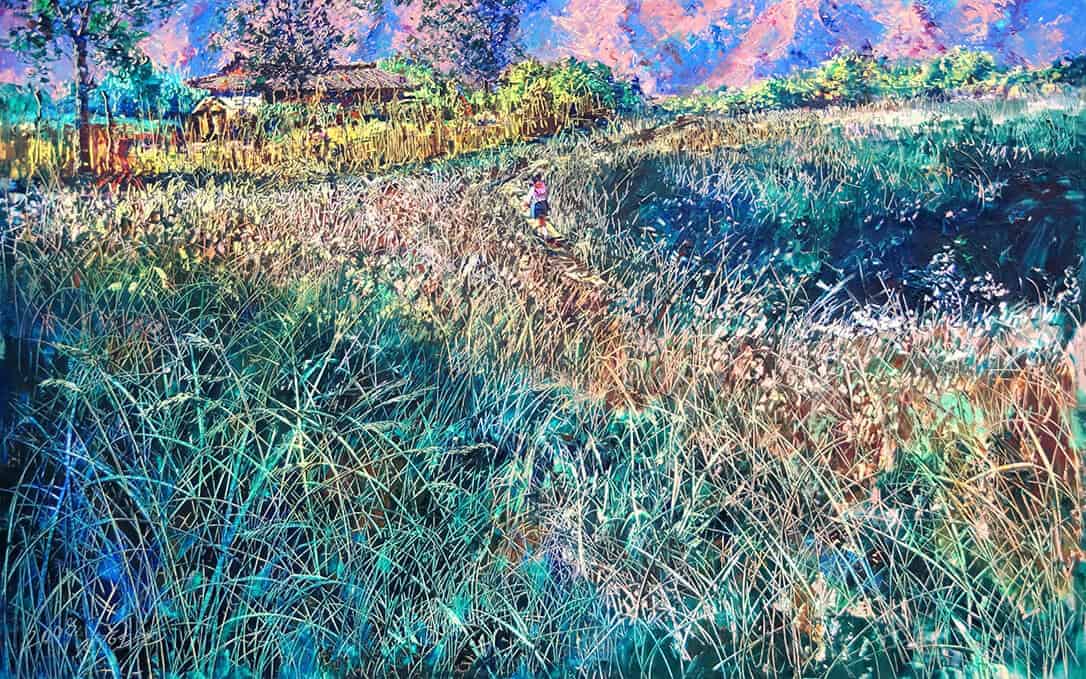Popular subjects were: everyday life, the Korean tiger, symbols of longevity such as cranes, deer, fungus, rocks, water, clouds, the sun, moon, pine trees and tortoises. The way subjects are presented also have a special meaning. Paired birds for instance are a symbol of marital love. Insects and flowers represent harmony between yin and yang. While books and bookshelves stand for learning and wisdom.
Colours In Korean art and their meanings
Another important element is the use of Korean colour symbolism, which imbues each colour with a specific meaning and significance. In Korean traditional painting, colours are often used to represent various aspects of nature, such as the seasons, elements, and landscape. They are also used to express emotions, personalities, and social status. Let’s take a closer look at some of the most common colours used in traditional Korean art and their meanings.
Black
In Korean traditional painting, black represents darkness, mystery, and the unknown. It is also associated with mourning, death, and the afterlife. Black is often used to represent mountains, which are seen as powerful and mysterious entities in Korean culture.
White
White symbolizes purity, innocence, and peace in Korean traditional painting. It is also associated with winter and snow, which are both highly valued in Korean culture. White is often used to represent clouds, water, and other natural elements that are soft and gentle.
Red
Red is a powerful and vibrant colour in Korean traditional painting. It represents energy, passion, and vitality. It is often used to depict fire, flowers, and other elements that are associated with life and vitality. Red is also the colour of the Korean flag, symbolizing the country’s passion and spirit.
Blue
Blue represents calmness, serenity, and tranquillity in Korean traditional painting. It is often used to depict water, which is seen as a peaceful and cleansing force in Korean culture. Blue is also associated with winter and the cold, but it can also represent the sky and the heavens.
Green
Green represents growth, vitality, and prosperity in Korean traditional painting. It is often used to depict plants, trees, and other elements of nature that are associated with life and abundance. Green is also associated with spring and the renewal of life.
Yellow
Yellow represents warmth, happiness, and generosity in Korean traditional painting. It is often used to depict the sun, which is seen as a life-giving force in Korean culture. Yellow is also associated with autumn and the harvest, representing abundance and prosperity.
In conclusion, Korean traditional painting is a rich and complex art form that incorporates a variety of symbolic elements, including colour symbolism. Each colour in Korean traditional painting represents a specific aspect of nature, emotion, or cultural tradition. By understanding the symbolism of colours in Korean traditional painting, you can gain a deeper understanding of Korean art.
The Kaesong Collection
The Kaesong Collection unfolds a stylistic and genre panorama of North Korean contemporary painting and brings out two aspects in the development of Korean art. One is associated with long art traditions of Korea, the Far East countries and their art heritage. The other, more modernist trends in the arena of world art. You will find an impression of the art works here. https://www.kaesongcollection.com/collections/collection
